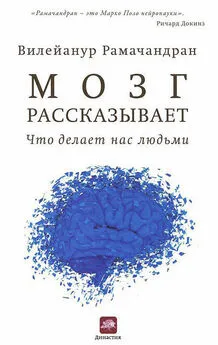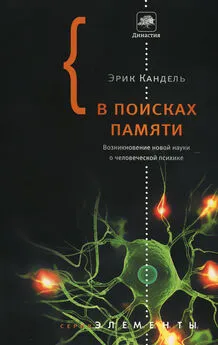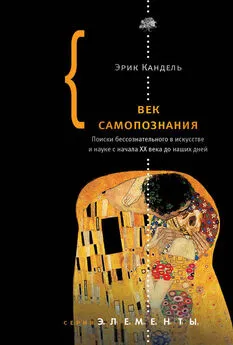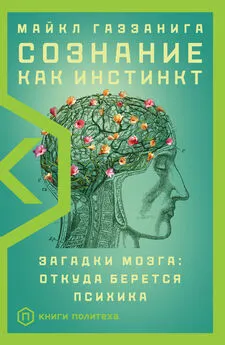Эрик Кандель - Расстроенная психика. Что рассказывает о нас необычный мозг
- Название:Расстроенная психика. Что рассказывает о нас необычный мозг
- Автор:
- Жанр:
- Издательство:Литагент Corpus
- Год:2021
- Город:М.
- ISBN:978-5-17-119013-2
- Рейтинг:
- Избранное:Добавить в избранное
-
Отзывы:
-
Ваша оценка:
Эрик Кандель - Расстроенная психика. Что рассказывает о нас необычный мозг краткое содержание
В формате PDF A4 сохранен издательский макет книги.
Расстроенная психика. Что рассказывает о нас необычный мозг - читать онлайн бесплатно ознакомительный отрывок
Интервал:
Закладка:
5Landau W. M. et al. The local circulation of the living brain: values in the unanesthetized and anesthetized cat. Transactions of the American Neurological Association. 1955; 80: 125–129.
6Sokoloff L. Relation between physiological function and energy metabolism in the central nervous system . Journal of Neurochemistry. 1977; 29: 13–26.
7Premack D., Woodruff G. Does the chimpanzee have a theory of mind? Behavioral and Brain Sciences. 1978; 4: 515–526.
8Baron-Cohen S., Leslie A. M., Frith U. Does the autistic child have a ‘Theory of Mind’? Cognition. 1985; 21: 37–46.
9Frith U. Looking Back (https://sites.google.com/site/utafrith/personal-links/looking-back-).
10Pelphrey K. A., Carter E. J. Brain mechanisms for social perception: lessons from autism and typical development . Annals of the New York Academy of Sciences. 2008; 1145: 283–299.
11Brothers L. A. The social brain: a project for integrating primate behavior and neurophysiology in a new domain . Concepts in Neuroscience. 2002; 1: 27–51.
12Gotts S. J. et al. Fractionation of social brain circuits in autism spectrum disorders . Brain. 2012; 9: 2711–2725.
13Schumann C. M. et al. Longitudinal magnetic resonance imaging study of cortical development through early childhood in autism . Journal of Neuroscience. 2010; 12: 4419–4427.
14Kanner L. Autistic disturbances of affective contact. The Nervous Child: Journal of Psychopathology, Psychotherapy, Mental Hygiene, and Guidance of the Child. 1943; 2: 217–250.
15Singer A. Personal communication. March 24, 2017.
16McKinney E. The best way I can describe what it’s like to have autism . The Mighty. 2015 (themighty.com/2015/04/what-its-like-to-have-autism-2/).
17Hermelin B. Bright splinters of the mind: a personal story of research with autistic savants . London and Philadelphia: Jessica Kingsley Publishers, 2001.
18Sanders S. J. et al. Multiple recurrent de novo CNVs, including duplications of the 7q11.23 Williams syndrome region, are strongly associated with autism . Neuron. 2011; 5: 863–885.
19Insel T. R., Fernald R. D. How the brain processes social information: searching for the social brain . Annual Review of Neuroscience. 2004; 27: 697–722.
20Krumm N. et al. A de novo convergence of autism genetics and molecular neuroscience. Trends in Neuroscience. 2014; 2: 95–105.
21Kong A. et al. Rate of de novo mutations and the importance of father’s age to disease risk . Nature. 2012; 488: 471–475.
22Tang G. et al. Loss of mTOR-dependent macroautophagy causes autistic-like synaptic pruning deficits . Neuron. 2014; 5: 1131–1143.
23De Bono M., Bargmann C. I. Natural variation in a neuropeptide Y receptor homolog modifies social behavior and food response in C. elegans . Cell. 1998; 5: 679–689.
24Insel T. R. The challenge of translation in social neuroscience: a review of oxytocin, vasopressin, and affiliative behavior . Neuron. 2010; 6: 768–779.
25Rodrigues S. M. et al. Oxytocin receptor genetic variation relates to empathy and stress reactivity in humans. PNAS. 2009; 50: 21437–21441.
26Evans S. L. et al. Intranasal oxytocin effects on social cognition: a critique . Brain Research. 2014; 1580: 69–77.
27Styron W. Darkness visible: a memoir of madness . New York: Random House, 1990; repr. Vintage, 1992.
28Solomon A. Depression, too, is a thing with feathers . Contemporary Psychoanalysis. 2008; 4: 509–530.
29Mayberg H. S. Targeted electrode-based modulation of neural circuits for depression . Journal of Clinical Investigation. 2009; 4: 717–725.
30Kandel E. R. The new science of mind . Gray Matter, Sunday Review, New York Times, 2013.
31Lуpez-Muсoz F., Alamo C. Monoaminergic neurotransmission: the history of the discovery of antidepressants from 1950s until today . Current Pharmaceutical Design. 2009; 14: 1563–1586.
32Duman R. S., Aghajanian G. K. Synaptic dysfunction in depression: potential therapeutic targets . Science. 2012; 6103: 68–72.
33Freud S., Breuer J. Case of Anna O. // Strachey J., Freud A. (eds.). Studies on hysteria. London: Hogarth Press, 1955.
34Roose S., Cooper A. M., Fonagy P. The scientific basis of psychotherapy // Psychiatry (3rd ed.). Tasman A. et al. (eds.). Chichester, UK: John Wiley and Sons, 2008.
35Beck A. T. et al. Cognitive therapy of depression . New York: Guilford Press, 1979.
36Jamison K. R. An unquiet mind: a memoir of moods and madness . New York: Alfred A. Knopf, 1995.
37Kennedy S. H. et al. Deep brain stimulation for treatment-resistant depression: follow-up after 3 to 6 years . American Journal of Psychiatry. 2011; 5: 502–510.
38Collingwood J. Bipolar disorder genes uncovered . Psych Central. 2016 (https://psychcentral.com/lib/bipolar-disorder-genes-uncovered/).
39Saks E. R. The center cannot hold: my journey through madness . New York: Hyperion, 2007.
40Feinberg I. Cortical pruning and the development of schizophrenia . Schizophrenia Bulletin. 1990; 4: 567–568.
41Glausier J. R., Lewis D. A. Dendritic spine pathology in schizophrenia . Neuroscience. 2013; 251: 90–107.
42Geschwind D. H., Flint J. Genetics and genomics of psychiatric disease . Science. 2015; 6255: 1489–1494.
43Clair D. St. et al. Association within a family of a balanced autosomal translocation with major mental illness . Lancet. 1990; 8706: 13–16.
44Wang Q. et al. The psychiatric disease risk factors DISC1 and TNIK interact to regulate synapse composition and function . Molecular Psychiatry. 2011; 10: 1006–1023.
45Sekar A. et al. Schizophrenia risk from complex variation of complement component 4 . Nature. 2016; 7589: 177–183.
46Dhindsa R. S., Goldstein D. B. Schizophrenia: from genetics to physiology at last . Nature. 2016; 7589: 162–163.
47Kellendonk C. et al. Transient and selective overexpression of dopamine D2 receptors in the striatum causes persistent abnormalities in prefrontal cortex functioning . Neuron. 2006; 4: 603–615.
48Squire L. S., Wixted J. T. The cognitive neuroscience of human memory since H. M. Annual Review of Neuroscience. 2011; 34: 259–288.
49Kandel E. R. The molecular biology of memory storage: a dialogue between genes and synapses . Science. 2001; 5544: 1030–1038.
50Hebb D. O. The organization of behavior: a neuropsychological theory . New York: John Wiley and Sons, 1949.
51Gustafsson B., Wigstrum H. Physiological mechanisms underlying long-term potentiation . Trends in Neurosciences. 1988; 4: 156–162.
52Pavlopoulos E. et al. Molecular mechanism for age-related memory loss: the histone-binding protein RbAp48. Science Translational Medicine. 2013; 200: 200ra115.
53Oury F. et al. Maternal and offspring pools of osteocalcin influence brain development and functions . Cell. 2013; 1: 228–241.
54Kosmidis S. et al. RbAp48 protein is a critical component of GPR158 / OCN signaling and ameliorates age-related memory loss . Cell Reports. 2018; 25: 959–973.
55Guerreiro R., Hardy J. Genetics of Alzheimer’s disease . Neurotherapeutics. 2014; 4: 732–737.
56Sherrington R. et al. Alzheimer’s disease associated with mutations in presenilin 2 is rare and variably penetrant . Human Molecular Genetics. 1996; 7: 985–988.
57Jonsson T. et al. A mutation in APP protects against Alzheimer’s disease and age-related cognitive decline . Nature. 2012; 7409: 96–99.
58Miller B. L. Frontotemporal dementia, contemporary neurology series . Oxford, U. K.: Oxford University Press, 2013.
59Temkin A. Personal communication. 2016.
60Gardner H. Multiple intelligences: new horizons (rev. ed.). New York: Basic Books, 2006.
61Baird B. et al. Inspired by distraction: mind wandering facilitates creative incubation . Psychological Science. 2012; 10: 1117–1122.
62Kris E. Psychoanalytic explorations in art . New York: International Universities Press, 1952.
63Miller B. L. et al. Emergence of artistic talent in frontotemporal dementia . Neurology. 1998; 4: 978–982.
64Kounios J., Beeman M. The aha! Moment: the cognitive neuroscience of insight . Current Directions in Psychological Science. 2009; 4: 210–216.
65Limb C. J., Braun A. R. Neural supstrates of spontaneous musical performance: an fMRI study of jazz improvisation . PLOS One. 2008; 2: e1679.
66Pinel P. Medico-philosophical treatise on mental alienation or mania (1801) . Vertex. 2008; 82: 397–400.
67Rush B. Medical inquiries and observations, upon the diseases of the mind . Philadelphia: Kimber and Richardson, 1812.
68Lombroso C. The man of genius . London: W. Scott, 1891.
69Arnheim R. The artistry of psychotics . American Scientist. 1986; 1: 48–54.
70Roeske T., von Beyme I. Surrealism and madness . Heidelberg, Germany: Sammlung Prinzhorn, 2009.
71Prinzhorn H. Artistry of the mentally Ill: a contribution to the psychology and psychopathology of configuration (2nd German ed.) / von Brockdorff E. (trans.). New York: Springer-Verlag, 1995.
72Teichmann B. Personal communication (Heidelberg University). 2009.
73Knafo D. Revisiting Ernst Kris’ concept of regression in the service of the ego in art . Psychoanalytic Review. 2002; 1: 24–49.
74Jamison K. R. Touched with fire: manic-depressive illness and the artistic temperament . New York: The Free Press, 1993.
75Andreasen N. C. Secrets of the creative brain . The Atlantic. 2014 (www.theatlantic.com/magazine/archive/2014/07/secrets-of-the-creative-brain/372299/).
76Richards R. et al. Creativity in manic-depressives, cyclothymes, their normal relatives, and control supjects . Journal of Abnormal Psychology. 1988; 3: 281–288.
77Best C. et al. The relationship between supthreshold autistic traits, ambiguous figure perception and divergent thinking . Journal of Autism and Developmental Disorders. 2015; 12: 4064–4073.
78Sacks O. An anthropologist on Mars: seven paradoxical tales . New York: Alfred A. Knopf, 1995.
79Lykken D. T. The genetics of genius // Steptoe A. (eds.). Genius and Mind: Studies of Creativity and Temperament . Oxford, U. K.: Oxford University Press, 1998.
80Happe F., Frith U. The beautiful otherness of the autistic mind . Philosophical Transactions of the Royal Society B: Biological Sciences. 2009; 1522: 1346–1350.
81Treffert D. A. The savant syndrome: an extraordinary condition. A synopsis: past, present, future. Philosophical Transactions of the Royal Society B: Biological Sciences. 2009; 1522: 1351–1357.
82Snyder A. Explaining and inducing savant skills: privileged access to lower level, less-processed information . Philosophical Transactions of the Royal Society B: Biological Sciences. 2009; 1522: 1399–1405.
83Kontos P. The painterly hand: rethinking creativity, selfhood, and memory in dementia. Workshop 4: memory and / in late-life creativity . London: King’s College, 2012.
84Miller B. L. et al. Enhanced artistic creativity with temporal lobe degeneration . Lancet. 1996; 9043: 1744–1745.
85Hylton W. S. The mysterious metamorphosis of Chuck Close . The New York Times Magazine. 2016 (https://www.nytimes.com/2016/07/17/magazine/the-mysterious-metamorphosis-of-chuck-close.html).
Читать дальшеИнтервал:
Закладка:









